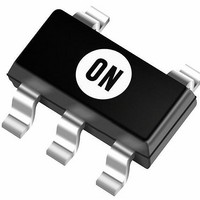NCP346SN2T1G ON Semiconductor, NCP346SN2T1G Datasheet - Page 6

NCP346SN2T1G
Manufacturer Part Number
NCP346SN2T1G
Description
Supervisory Circuits 5.5V Overvoltage Supervisor
Manufacturer
ON Semiconductor
Datasheet
1.NCP346SN1T1G.pdf
(15 pages)
Specifications of NCP346SN2T1G
Number Of Voltages Monitored
1
Monitored Voltage
5.5 V
Overvoltage Threshold
Adjustable, 4.55 V
Output Type
PFET Driver
Manual Reset
Resettable
Watchdog
No Watchdog
Supply Voltage (max)
25 V
Supply Voltage (min)
2.5 V
Supply Current (typ)
650 uA
Maximum Power Dissipation
216 mW
Maximum Operating Temperature
+ 85 C
Mounting Style
SMD/SMT
Package / Case
SOT-23-5 Thin (TSOP-5)
Minimum Operating Temperature
- 40 C
Lead Free Status / Rohs Status
Lead free / RoHS Compliant
Available stocks
Company
Part Number
Manufacturer
Quantity
Price
Company:
Part Number:
NCP346SN2T1G
Manufacturer:
ON
Quantity:
11 617
Part Number:
NCP346SN2T1G
Manufacturer:
ON/安森美
Quantity:
20 000
Introduction
adapter is used to convert the AC line voltage into a
regulated DC voltage or a current limited source. Line
surges or faults in the adapter may result in overvoltage
events that can damage sensitive electronic components
within the product. This is becoming more critical as the
operating voltages of many integrated circuits have been
lowered due to advances in sub−micron silicon lithography.
In addition, portable products with removable battery packs
pose special problems since the pack can be removed at any
time. If the user removes a pack in the middle of charging,
a large transient voltage spike can occur which can damage
the product. Finally, damage can result if the user plugs in
the wrong adapter into the charging jack. The challenge of
the product designer is to improve the robustness of the
design and avoid situations where the product can be
damaged due to unexpected, but unfortunately, likely events
that will occur as the product is used.
Circuit Overview
has been developed consisting of the NCP346 Overvoltage
Protection IC and a P−channel MOSFET switch such as the
MGSF3441. The NCP346 monitors the input voltage and
will not turn on the MOSFET unless the input voltage is
within a safe operating window that has an upper limit of the
overvoltage detection threshold. A Zener diode can be
placed in parallel to the load to provide for secondary
protection during the brief time that it takes for the NCP346
to detect the overvoltage fault and disconnect the MOSFET.
The decision to use this secondary diode is a function of the
charging currents expected, load capacitance across the
battery, and the desired protection voltage by analyzing the
In many electronic products, an external AC/DC wall
To address these problems, the protection system above
Accessory Charger
AC/DC Adapter or
(optional)
Zener
Diode
(optional)
(opt.)
IN
GND
APPLICATION INFORMATION
+
−
V
ref
http://onsemi.com
V
CC
Figure 3.
NCP346
Logic
6
CNTRL
Microprocessor
dV/dT rise that occurs during the brief time it takes to
turn−off the MOSFET. For battery powered applications, a
low−forward voltage Schottky diode such as the
MBRM120LT3 can be placed in series with the MOSFET to
block the body diode of the MOSFET and prevent shorting
the battery out if the input is accidentally shorted to ground.
This provides additional voltage margin at the load since
there is a small forward drop across this diode that reduces
the voltage at the load.
can be a sudden rise in the input voltage of the device. This
transient can be quite large depending on the impedance of
the supply and the current being drawn from the supply at the
time of an overvoltage event. This inductive spike can be
clamped with a Zener diode from IN to ground. This diode
breakdown voltage should be well above the worst case
supply voltage provided from the AC/DC adapter or
Cigarette Lighter Adapter (CLA), since the Zener is only
intended to clamp the transient. The NCP346 is designed so
that the IN and V
withstand transients to 30 V. Since these spikes can be very
narrow in duration, it is important to use a high bandwidth
probe and oscilloscope when prototyping the product to
verify the operation of the circuit under all the transient
conditions. A similar problem can result due to contact
bounce as the DC source is plugged into the product.
ground in parallel with the battery. If the product has a
battery pack that is easily removable during charging, this
scenario should be analyzed. Under that situation, the
charging current will go into the capacitor and the voltage
may rise rapidly depending on the capacitor value, the
charging current and the power supply response time.
NCP346
Driver
FET
port
When the protection circuit turns off the MOSFET, there
For portable products it is normal to have a capacitor to
NTHS4101PT1
OUT
P−CH
(optional)
CC
Zener
Diode
pin can safely protect up to 25 V and
MBRM130LT1
Schottky
Diode
+
C1
LOAD











